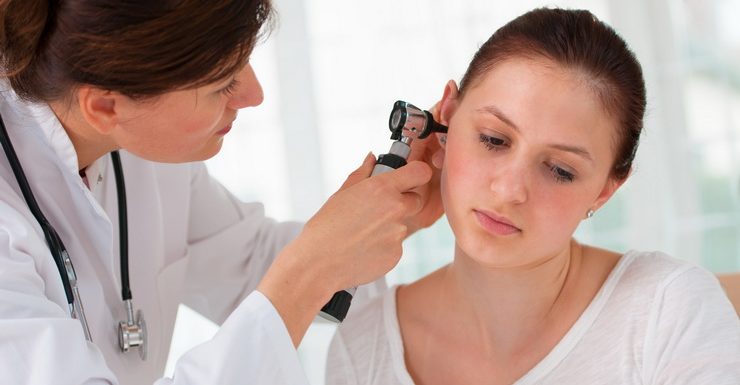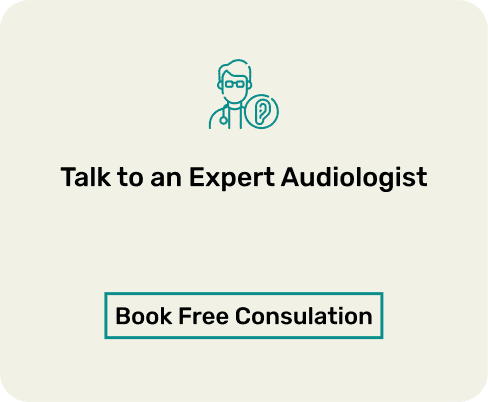Hearing loss is a serious disorder that needs proper diagnosis and treatment. While not all forms of hearing loss may need corrective hearing aids, there are certain Hearing Test for ear which will help you identify the type of hearing loss and how to treat it.
Though people are known to experiment with purchasing hearing instruments online, it is an extremely risky choice.
Diagnosing the type and degree of hearing loss needs the expertise of an audiologist and associated facilities. Only after a complete hearing evaluation can one decide what the course of corrective action should be for someone with a hearing impairment.
The Solutions could range from allopathic medicines to even surgery. For certain types of hearing loss and in the case of older patients where surgeries are rarely recommended, the answer is Hearing Aids.
In fact, globally, the WHO reported that 430 million people have at least moderate hearing loss and may benefit from a hearing aid. By 2050, this number will rise to more than 700 million people.
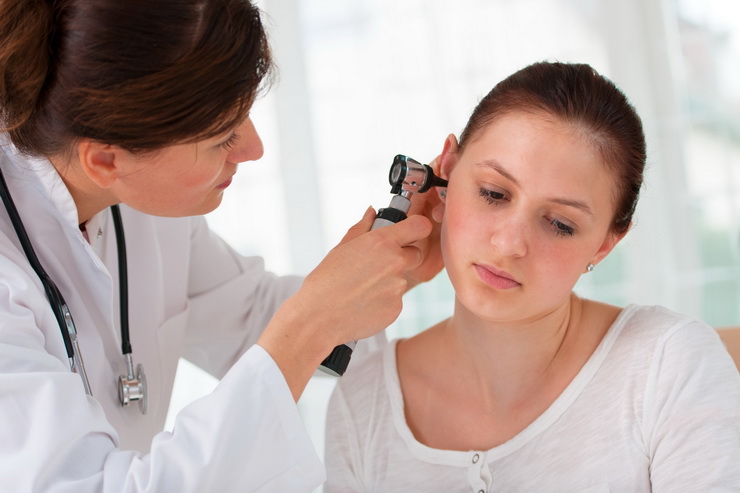
Let’s look at some of the tests meant to diagnose hearing loss.
PTA Test For Diagnosing Hearing Loss
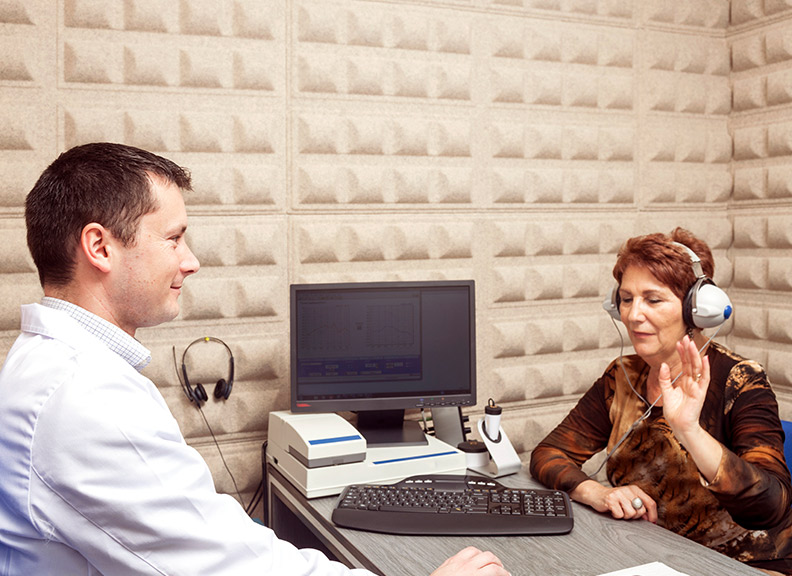
Pure Tone Audiometry (PTA Test)
Pure Tone Audiometry (PTA) serves as a fundamental hearing assessment utilised by ENT specialists and audiologists to check an individual’s hearing capabilities. This test accurately measures hearing thresholds and pdetermines the degree, type, and configuration of hearing loss.
The PTA test functions as a subjective, behavioural hearing evaluation that relies on the patient’s active participation and responses to pure tone sound stimuli. Because it requires cooperation and understanding of instructions, this is particularly well-suited for adults and children who can follow the test procedure effectively.
As one of the most frequently conducted evaluations in hearing clinics, PTA testing excels at detecting early indicators of both sensorineural and conductive hearing loss, enabling timely intervention and appropriate treatment planning.
PTA only measures thresholds rather than other aspects of hearing, such as sound localization. This includes two types of tests:
- Air Conduction: During an air conduction test, sounds are played into the person’s ears through earphones placed directly in the ear. This type of pure tone test gives you and the audiologist information about how all parts of the ear are working.
- Bone Conduction: During a bone conduction test, sounds are produced by a bone oscillator placed on the person’s forehead. A bone conduction test will inform you and the audiologist about your baby’s sensorineural function (or how the inner ear works).
Other tests for diagnosing hearing loss are:
1. Otoacoustic Emissions (OAE)
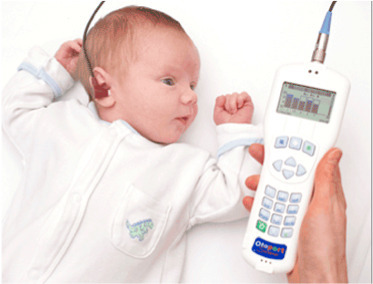
The OAE test (Otoacoustic Emissions test) is primarily used for newborn hearing screening and young children because it is objective, meaning it doesn’t require the person being tested to respond.
This hearing test is usually performed on newborn babies to detect deafness and can also be used on adults to test for hearing loss. ‘Otoacoustic emissions’ refer to the sounds produced by the cochlea. These sounds can be used to test the function of the cochlea and other parts of the ear, including the auditory nerve.
OAE testing is not painful, and many babies sleep right through it. During the OAE test, sounds are played into the baby’s ear through a small earphone placed in the baby’s ear. A microphone measures an echo response from the inner ear. This information helps define the type of hearing loss. If the cochlea is functioning properly, it should echo in response to the sound.
2. Impedance Audiometry (Tympanometry)
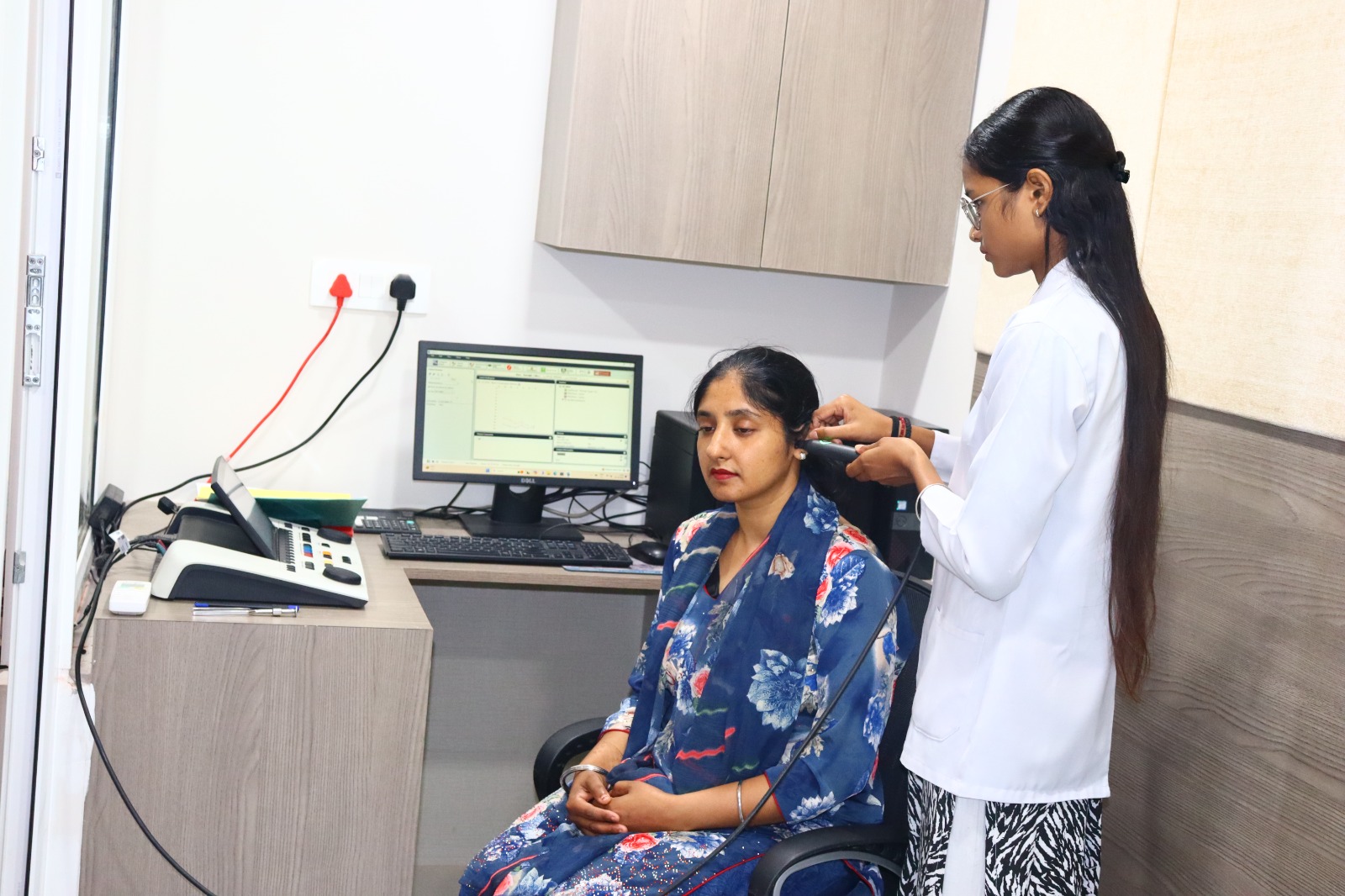
This test determines how the eardrum and middle ear are working. During a tympanometry test, a small earphone is placed in the ear canal and air pressure is gently changed. This test helps show if there is an ear infection or fluid in the middle ear. This test is important because fluid or other problems in the middle ear can affect hearing.
3. BERA (Brain Evoked Response Audiometry)
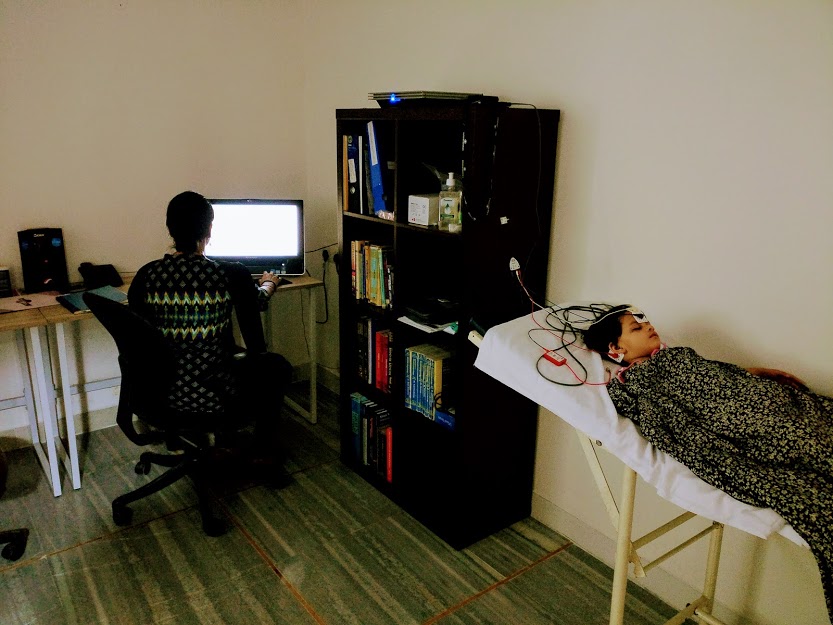
BERA, also known as Auditory Brainstem Response (ABR), is a reliable and non-invasive hearing test used to assess the auditory nerve and brainstem response to sound.
Unlike Pure Tone Audiometry, the BERA test does not require any active response from the patient, making it ideal for:
- Newborn hearing screening
- Infants and young children
- Adults who are uncooperative or unable to respond
- Diagnosing retrocochlear disorders such as acoustic neuroma
- Evaluating neurological hearing function
The BERA hearing test is commonly recommended by ENT specialists and audiologists to detect early signs of sensorineural hearing loss, auditory neuropathy, or other neural hearing issues. It uses a special computer to measure how the child’s hearing nerve responds to different sounds.
The test is usually performed with the child in a state of deep sleep. There might be a need for sedation in slightly older or hyperactive children.
4. Auditory Steady State Responses (ASSR)
ASSR testing is another electrophysiologic measurement of a baby’s hearing. The results of this test may provide more frequency-specific threshold information for infants with severe to profound hearing loss. This gives the audiologist more precise data to proceed with hearing aid fittings or determining cochlear implant candidacy. Like the ABR assessment, infants over 6 months may need to be sedated for ASSR testing.
5. Behavioral Audiometry
As a child matures and can provide hearing results behaviorally, hearing information can be plotted with even greater specificity. During audiometric testing, the audiologist finds the lowest intensity level (threshold) at which a child can detect sound at different frequencies.
From this information, a graphic representation of the hearing loss called an audiogram, is created. Based on the audiogram, the hearing loss will typically be classified as mild, moderate, moderately severe, severe, or profound.
Based on the diagnosis, the appropriate hearing instrument is identified and fitted. The audiologist programmed and personalised the hearing instruments to suit the individual’s requirements and hearing loss.
Additionally, the audiologist will also provide other services such as:
- Fine-tuning of hearing instruments
- After-sales service and repair
- Mould and shell production (ear pieces made to fit the individual’s ear comfortably)
- Home visits for elderly/senior citizens
If you or a loved one are suffering from hearing loss, get in touch with Centre For Hearing!
We offer the most comprehensive diagnostic facilities like the PTA Test and have over 50 RCI-certified audiologists onboard across several locations in India, including Delhi, Gurgaon, Chandigarh, & Punjab.
For personalized assistance or to explore our offerings, reach out to us at +91 9811 227 269.

